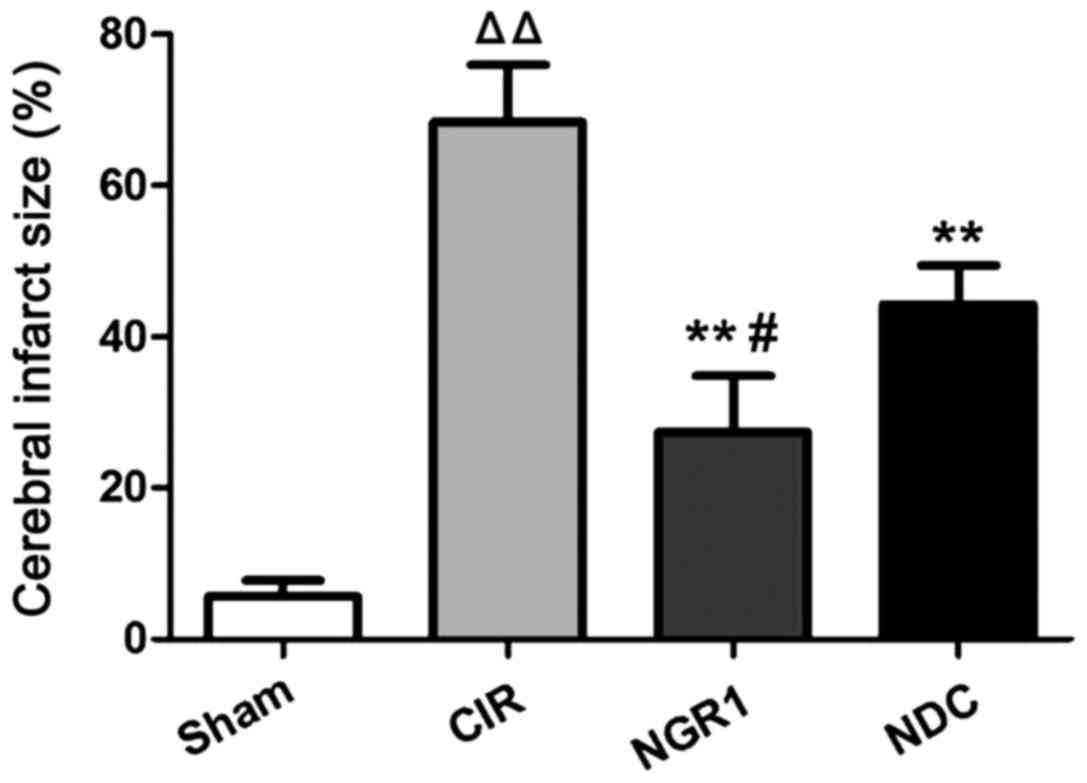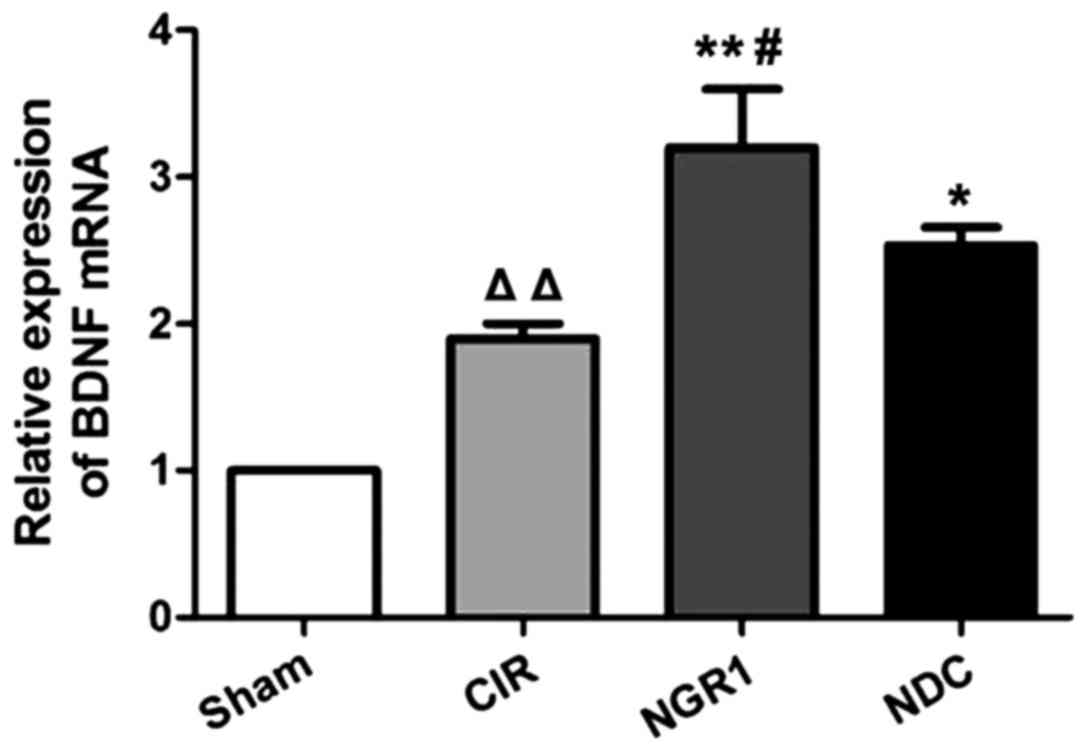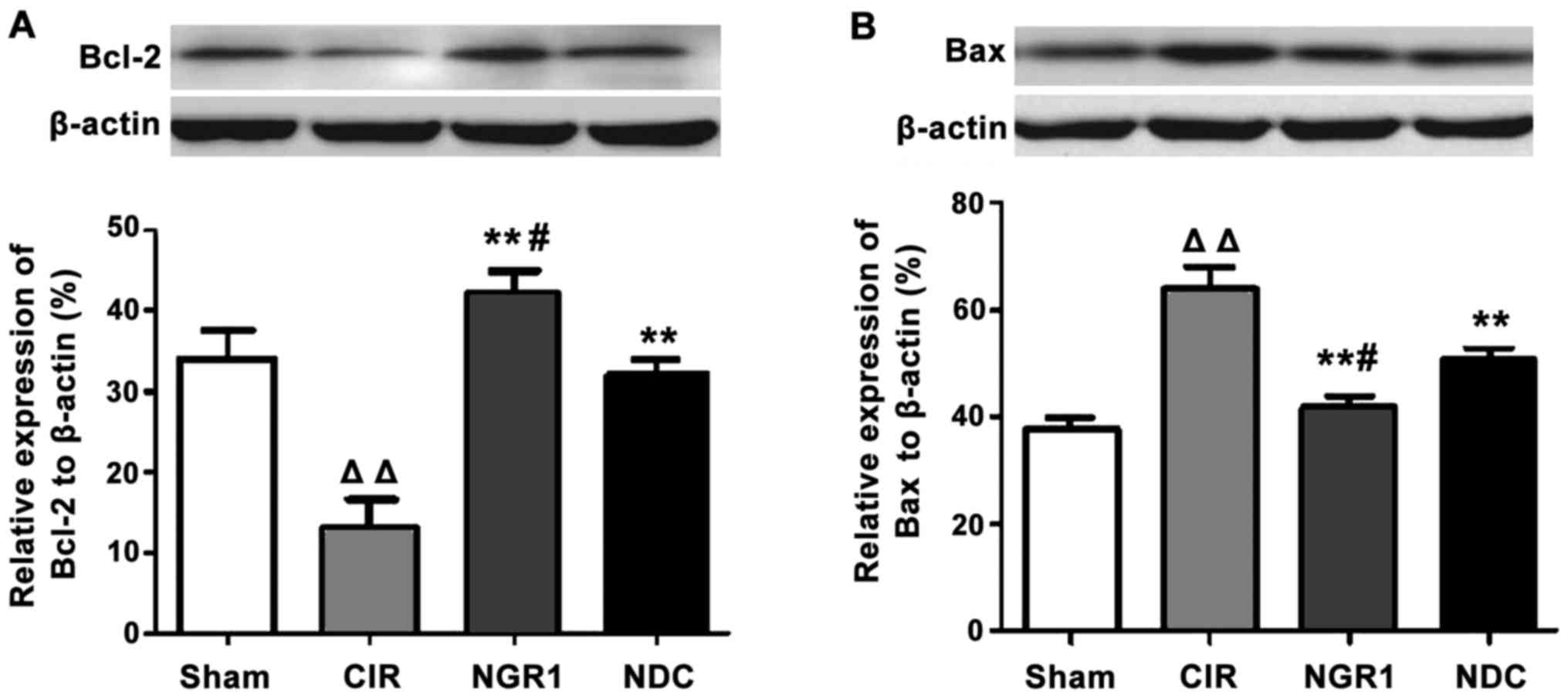Protective effects of notoginsenoside R1 on cerebral ischemia-reperfusion injury in rats
- Authors:
- Published online on: October 6, 2017 https://doi.org/10.3892/etm.2017.5268
- Pages: 6012-6016
-
Copyright: © Zou et al. This is an open access article distributed under the terms of Creative Commons Attribution License.
Metrics: Total
Views: 0 (Spandidos Publications: | PMC Statistics: )
Total PDF Downloads: 0 (Spandidos Publications: | PMC Statistics: )
Abstract
The objective of this study was to investigate the protective effect of notoginsenoside R1 (NGR1) on cerebral ischemia-reperfusion injury (CIRI) in rats, and its molecular mechanism, to provide new insights into the diagnosis and treatment of CIRI. Sixty Sprague-Dawley rats were randomly divided into four groups including the sham-operation group (Sham), cerebral ischemia-reperfusion model group (CIR), NGR1 treatment group (NGR1), and nimodipine positive control group (NDC) with 15 rats each. Bilateral common carotid arteries occlusion was used to establish the rat CIRI model. The area of cerebral infarction at the end of reperfusion was calculated by triphenyl tetrazolium chloride staining. Apoptosis of hippocampal neurons in each group was detected by Annexin V/propidium iodide double staining. Hippocampal expression of brain-derived neurotrophic factor (BDNF) mRNA, and Bcl-2 and Bax protein at the end of reperfusion were measured by RT-qPCR and western blot analysis, respectively. Data were analyzed by SPSS software analysis to ensure statistical significance. At the end of reperfusion, the area of cerebral infarction in the NGR1 and NDC groups was significantly smaller than that of the CIR group. Apoptosis analysis showed that compared with the CIR group, the apoptosis rate of hippocampal neurons was significantly decreased in the NGR1 and NDC groups. RT-qPCR and western blot analysis showed that at the end of reperfusion, higher levels of BDNF mRNA and the anti-apoptotic factor, Bcl-2, and lower levels of the pro‑apoptotic factor, Bax, in the hippocampus were found in the NGR1 and NDC groups compared with the CIR group. The protective effect of NGR1 on CIRI was significantly stronger than that of nimodipine. In conclusion, NGR1 can reduce the area of cerebral infarction, reduce apoptosis of hippocampal neurons, and protect rats from CIRI. Those effects were achieved by activating the expression of BDNF and Bcl-2, and by inhibiting the expression of Bax.













